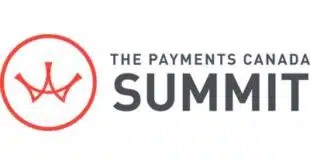Agents that sell card acceptance aren’t powerless when merchants gripe about the cost.
Merchant discontent over card-acceptance fees is nothing new, but every few years the din rises several octaves, just as it has in 2023. While merchants, card issuers, the card networks, and politicians argue over whether acceptance costs are fair, guess who’s caught in the middle? Merchant acquirers.
An integral part of card payments, acquirers often find themselves performing a difficult balancing act when it comes to card-acceptance fees. Sure, acquirers levy a fee on merchants for settling card transactions, but their fees are a small portion of overall acceptance costs, the bulk of which is composed of interchange costs.
Since interchange is set by Visa and Mastercard, acquirers have little power to reduce merchants’ acceptance costs. That does not mean acquirers aren’t mindful of acceptance costs or are not taking steps to reduce those costs. Or at the very least, make those costs more predictable.
“Everyone in the payment ecosystem believes there should be acceptance costs. The question is, what should those costs be?” says Greg Cohen, chief executive at Fortis Payment Systems. “Acquirers are middlemen, but they can proactively work with merchants to reduce acceptance costs.”
Many acquirers are doing just that, payments experts say. Tactics include waiving hardware costs, supporting dual pricing for cash and credit purchases, offering bundled rates, and helping merchants qualify more transactions for a lower rate by sending more information about the transaction to the issuer to let it know the transaction is low risk.
Bundled rates aren’t necessarily cheaper for merchants. But they do provide certainty for small merchants about the acceptance fees charged for each card transaction and simplify a merchant’s monthly statement from its acquirer.
“There is value to small merchants in bundled pricing, and several acquirers, such as Stripe, NAB [North American Bancard], and Square are or have moved to it,” says Cliff Gray, a senior associate for the consultancy TSG, formerly The Strawhecker Group.
“Bundled pricing doesn’t necessarily provide cost savings,” Gray continues, “but it does simplify the acquirer’s monthly statement for the merchant and gives them certainty over acceptance costs, since they know every transaction will be charged the same rate.”
While bundled pricing makes sense for small merchants, it does not for merchants with high card volumes. “Any merchant with large volume is going to negotiate to get the best acceptance fees possible [because it’s in their best interest],” Gray says.
‘A Point of Friction’
Keeping abreast of the challenges merchants face and their needs in payment acceptance is important for acquirers and can help reduce merchants’ dissatisfaction over acceptance fees. Paysafe Ltd., which specializes in online and mobile transactions, regularly seeks feedback from its customers through customer-satisfaction surveys.
“In the event of acceptance fees being a point of friction, we leverage our merchant-support team to educate our customers on how to lower their total cost of acceptance through industry education,” says Nathaniel Short, senior vice president of Global SMB (small and medium-size businesses) for Paysafe. “In some cases, we will evaluate the interchange categories with the merchant and ensure we are utilizing the correct ones on their transactions.”
One way that Paysafe helps merchants lower their total costs of acceptance is ensuring that the address-verification system or 3D Card is enabled for card-not-present transactions to prevent fraud or chargebacks.
3D cards require customers to complete an additional verification step with the card issuer when paying. Typically, cardholders are directed to an authentication page on the card issuer’s Web site, where they enter a password or a code sent to their mobile phone.
Waiving hardware costs can also help reduce a merchant’s acceptance cost, but that strategy has limitations. Offering a free terminal reduces a merchants’ upfront cost to accept cards, but does not lower acceptance fees.
“Free hardware is a one-time fee reduction that does not reduce the day-to-day pain of acceptance costs,” says Gray. “Plus, hardware costs have pretty much been normalized, so the magnitude of the savings is not necessarily that great.”
Supporting dual pricing for cash and credit purchases is another strategy acquirers are using to help merchants ease the pain of acceptance costs. Dual pricing allows merchants to show consumers a cash price and credit price for their purchase. Typically, the cash price is lower, which serves as an incentive for the consumer to pay with cash.
The drawback is that dual pricing can be complicated to implement. It may not make sense for some merchants. “We are seeing more dual pricing in the market, and it works great for gas stations, but that’s because gas stations have only one SKU. Dual pricing is not as easy to implement for merchants with thousands of SKUs,” says Cohen.
“What acquirers should be educating merchants about is the base rate as opposed to the headline costs. Acquirers all deal with the same base costs,” he adds.
The key to getting merchants to understand the foundation for their acceptance costs is for acquirers to present their base rate in as transparent a manner as possible, Cohen adds.
Value at Checkout
While dual pricing can help lower a merchant’s total acceptance costs, some payment experts argue acquirers should avoid supporting it. “Dual pricing is a gimmick,” says Todd Ablowitz, co-founder and co-chief executive for payments facilitator Infinicept. “Acquirers should focus on service and bringing in the right products and value-added services. If a merchant perceives value in the services the acquirer is offering, the merchant will pay for it.”
Fraud-detection and -prevention tools are value-added services frequently offered by acquirers. The value to merchants is two-fold. First, merchants can use them to mitigate financial losses from selling goods for which they will not receive payment. Second, the tools reduce chargebacks, which can increase a merchant’s interchange rate if they exceed a certain threshold.
Stripe Inc., which offers bundled pricing, touts value-added services as a way for merchants to increase revenues, which can help offset card acceptance.
“Payments is a domain with significant opportunities for optimization, and thus technical craft really matters,” says Tom Holman, head of payment acceptance for Stripe. “[Just as] a superior computer chip makes a smart phone faster, superior payments technology means more legitimate payments succeed, while fraud is kept in check.”
Stripe offers tools that aim to improve and speed up checkout and boost conversion rates. In September, Stripe unveiled a series of enhancements aimed at improving checkout for merchants. The new features—which include one-click checkouts and a no-code A/B testing tool for businesses to evaluate how different payment methods perform—rely on pre-built user interfaces, which allow merchants to quickly deploy the new features, since they don’t have to develop the code themselves, Stripe says.
A key feature within the enhancements is a so-called Payment Element that uses algorithms trained on billions of data points to present consumers with what it determines to be the most relevant payment methods from more than 40 options.
For example, the Payment Element could suggest to French consumers shopping in Japan that they might pay with Cartes Bancaires, while suggesting local payment options to Japanese consumers.
“While a majority of organizations still view payments as a cost center, others are beginning to see it as an engine to grow revenue,” Holman says. “These companies are seeing pretty heady ROI. For instance, we’ve seen companies deploy no-code A/B testing to increase average order value by 36%.”
Stripe research has also shown that merchants migrating to its enhanced checkout apps increased users’ revenue by an average of 10.5%, Holman adds.
“There’s a lot of value add possible at checkout, and there’s a ton more when it comes to authorizing those successful checkout sessions,” Holman says. “Any business knows there’s a lot of legitimate transactions that get declined as suspected fraud.”
One drawback to pitching value-added services is that merchants often have to pay an additional fee for them. “There’s a cost to value-added services,” says Gray. “Fraud-detection tools help a merchant save money by reducing fraud losses, but are they really a value-added service or [a standard feature] acquirers should be offering?” says Gray.
‘Less Frictional’
Other techniques acquirers can use to help alleviate merchants’ cost concerns include surcharging, a practice in which the merchant passes acceptance costs along to the consumers.
Under Visa and Mastercard rules, retailers are required to register the surcharge with the payment network. Next, they must display a notice of the surcharge at the point of sale — both in-store and online. The consumer’s receipt must also indicate a surcharge was added to the bill.
The drawback to surcharging for merchants is that it can turn off consumers by making them feel as though they are being penalized for paying with a credit or debit card, payments experts say.
Acquirers that support surcharging or dual pricing also need to make sure those solutions are compliant with industry regulations and educate merchants about those pricing models, adds Paysafe’s Short.
Alternative payment methods, such as digital wallets, buy now, pay later, and cryptocurrency are a way to lower a merchant’s card-acceptance costs as those options cost less to accept than a credit or debit card. “Depending on the fees associated with these alternative methods, some merchants may find them less frictional compared to traditional card payments,” says Holman.
While alternative payment options can help lower a merchant’s acceptance costs, they do not necessarily generate enough volume to matter. “Unlike cards, most alternative payments are not revenue positive,” says Gray.
‘A Lingering Question’
Given the competitiveness of the merchant-acquiring market, one of the most effective ways acquirers can ease merchants’ concerns over acceptance costs is to provide multiple pricing models. Complete transparency about costs also helps.
Paysafe, for example, offers multiple pricing models to ease merchants’ concerns. “We have interchange plus, tiered, bundled pricing, cash discount … flat rate, and many more options for our merchants,” says Short. “We have a very transparent approach to acceptance costs and placing merchants in the right pricing model to suit their business.”
Paysafe’s goal, Short adds, is to offer pricing models that provide sellers with a service that doesn’t become, as he says, “cost inhibitive.”
Regardless of what strategies acquirers employ, the controversy surrounding acceptance fees will never go away. “There is value in card acceptance to merchants, but what is an appropriate cost is a lingering question,” says Cohen. “No matter what the cost, there is always going to be a camp that says it is too much.”




